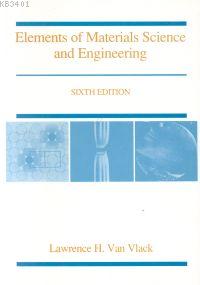9799757860388
29376

https://www.turkishbooks.com/books/elements-of-materials-science-and-engineering-6th-edition-p29376.html
Elements Of Materials Science And Engineering 6th edition
14.4
No course in science or engineering may remain static. Not only does technology advance and scientifc understanding increase, the academic framework undergoes changes. Thus, periodic revisions are desirable in an effort to optimize the value of a textbook for students who will be tomorrow´s engineers.
Developments such as the high-temperature superconductors are exciting, and the scientific data such as that obtained from tunnelling electron microscopes provide new insights. During the last decade, however, the evoling structure of the academic environment probably has had a more direct impact on introductory materials courses within the engineering curricula. Whereas academic departments will continue to have specialists in ceramics, in polymers, and in metals, the trend has been toward departments of materials science and engineering. The reasons for this merging are many; for example, fracture toughness applies equally to the failure of metals, of ceramics, and of polymers, as well as to hybrid composites. Likewise, graduate students working with polyblends give cognizance to phase immiscibilities and to the microstructure/property relationships utilized by ceramists and metallurgists. Particulate processing is no longer restricted to ceramics, nor are engineering designs using magnets limited to metallic materials.
(Önsöz´den)
No course in science or engineering may remain static. Not only does technology advance and scientifc understanding increase, the academic framework undergoes changes. Thus, periodic revisions are desirable in an effort to optimize the value of a textbook for students who will be tomorrow´s engineers.
Developments such as the high-temperature superconductors are exciting, and the scientific data such as that obtained from tunnelling electron microscopes provide new insights. During the last decade, however, the evoling structure of the academic environment probably has had a more direct impact on introductory materials courses within the engineering curricula. Whereas academic departments will continue to have specialists in ceramics, in polymers, and in metals, the trend has been toward departments of materials science and engineering. The reasons for this merging are many; for example, fracture toughness applies equally to the failure of metals, of ceramics, and of polymers, as well as to hybrid composites. Likewise, graduate students working with polyblends give cognizance to phase immiscibilities and to the microstructure/property relationships utilized by ceramists and metallurgists. Particulate processing is no longer restricted to ceramics, nor are engineering designs using magnets limited to metallic materials.
(Önsöz´den)
Yorumlar (0)
Yorum yaz
Bu kitabı henüz kimse eleştirmemiş.











